The following list, arranged alphabetically, by author, is recommended as material for background, human interest or historical information regarding the Palestine-Israel conflict. Titles with a blue asterisk * are a good place to begin if you are new to the conflict or seeking sources about the 'other side' of the story (whatever is your 'other' side). Titles with a green asterisk * are good reference resources of the conflict. Your comments and additions are welcome.
Additional books and videos are listed in each issues section of the P4PD Web site.
*Armstrong, Karen
Islam: A short history
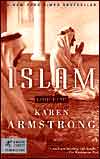 One of the greatest of the world religions through the 1500 years of its existence, Islam has also been by far the most misunderstood. The Western world has undergone a complete revolution of thought in recent centuries, but its mistrust of Islam is still essentially medieval. …Karen Armstrong's book cuts through the clich้ to reveal a faith which has inspired as many scholars, mystics and poets as soldiers. Islam, she makes clear, has not only been one of the world's most important and inspiring religions, but the basis for one of its most illustrious civilizations. One of the greatest of the world religions through the 1500 years of its existence, Islam has also been by far the most misunderstood. The Western world has undergone a complete revolution of thought in recent centuries, but its mistrust of Islam is still essentially medieval. …Karen Armstrong's book cuts through the clich้ to reveal a faith which has inspired as many scholars, mystics and poets as soldiers. Islam, she makes clear, has not only been one of the world's most important and inspiring religions, but the basis for one of its most illustrious civilizations.
*Ashrawi, Hanan (1995)
This Side of Peace: a Personal Account
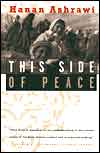 Hanan Ashrawi is the founder of the Palestinian Independent Commission for Citizens' Rights, a former spokesperson for the leadership of the Palestinians in the Occupied Territories and a professor of English at Birzeit University in Ramallah, Palestine. This is her story of the Palestinan struggle for recognition and movement for peace. Hanan Ashrawi is the founder of the Palestinian Independent Commission for Citizens' Rights, a former spokesperson for the leadership of the Palestinians in the Occupied Territories and a professor of English at Birzeit University in Ramallah, Palestine. This is her story of the Palestinan struggle for recognition and movement for peace.
Benveniste, Meron
Sacred Landscapes, The buried history of the holy land since 1948
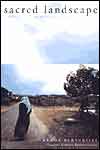 As a young man, Meron Benvenisti often accompanied his father, a distinguished geographer, when the elder Benvenisti traveled through the Holy Land charting a Hebrew ap that would rename Palestinian sites and villages with names linked to Israel's ancestral homeland. Benvenisti's youthful experiences are central to this book, and his story helps explain how an Arab landscape, both physical and human, was transformed into an Israeli, Jewish state. Benvenisti discusses the process by which new Hebrew nomenclature replaced the Arabic names of more than 9000 natural features, villages, and ruins in Eretz Israel/Palestine (his name for the Holy Land, thereby defining it as a land of Jews and Arabs). He then explains how the Arab landscape has been transformed through war, destruction, and expulsion into a flourishing Jewish homeland accommodating millions of immigrants. The resulting encounters between two peoples who claim the same land have raised great moral and political dilemmas, which Benvenisti presents with candor and impartiality. Benvenisti points out that five hundred years after the Moors left Spain, sufficient landmarks remain to preserve the outlines of Muslim Spain. Even with the sustained modern development, the ancient scale is still visible. Yet a Palestinian returning to his ancestral landscape after only fiftyyears would have difficulty identifying his home. Furthermore, Benvenisti says, the transformation of Arab cultural assets into Jewish holy sites has engendered a struggle over the 'signposts of memory' essential to both peoples. Sacred Landscape raises some troublesome questions that most writers on the Middle East avoid. The now-buried Palestinian landscape remains a symbol and a battle standard for Palestinians and Israelis. But it is Benvenisti's belief that Eretz Israel/Palestine has enough historical and physical space for the people of both nations and that it can one day be a shared homeland. As a young man, Meron Benvenisti often accompanied his father, a distinguished geographer, when the elder Benvenisti traveled through the Holy Land charting a Hebrew ap that would rename Palestinian sites and villages with names linked to Israel's ancestral homeland. Benvenisti's youthful experiences are central to this book, and his story helps explain how an Arab landscape, both physical and human, was transformed into an Israeli, Jewish state. Benvenisti discusses the process by which new Hebrew nomenclature replaced the Arabic names of more than 9000 natural features, villages, and ruins in Eretz Israel/Palestine (his name for the Holy Land, thereby defining it as a land of Jews and Arabs). He then explains how the Arab landscape has been transformed through war, destruction, and expulsion into a flourishing Jewish homeland accommodating millions of immigrants. The resulting encounters between two peoples who claim the same land have raised great moral and political dilemmas, which Benvenisti presents with candor and impartiality. Benvenisti points out that five hundred years after the Moors left Spain, sufficient landmarks remain to preserve the outlines of Muslim Spain. Even with the sustained modern development, the ancient scale is still visible. Yet a Palestinian returning to his ancestral landscape after only fiftyyears would have difficulty identifying his home. Furthermore, Benvenisti says, the transformation of Arab cultural assets into Jewish holy sites has engendered a struggle over the 'signposts of memory' essential to both peoples. Sacred Landscape raises some troublesome questions that most writers on the Middle East avoid. The now-buried Palestinian landscape remains a symbol and a battle standard for Palestinians and Israelis. But it is Benvenisti's belief that Eretz Israel/Palestine has enough historical and physical space for the people of both nations and that it can one day be a shared homeland.
*Bregman, Ahron and Jihan El-Tahri (1998)
The Fifty Years War: Israel and the Arabs
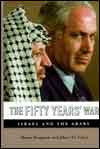 Covering the main events between Israel and its Arab neighbors during the past fifty years - from its earliest attempts to establish itself, through the Six Day War in 1967 and the Lebanon War in 1982, to the peace negotiations of this decade - this is the definitive insiders' account of war and peace in the Middle East. … Published to accompany a six-part BBC television series by the makers of the award-winning Death of Yugoslavia, this ground-breaking book exposes some of the long-held myths about events in the Middle East. Drawing on candid in-depth interviews with key figures in the struggles - from both Israel and its Arab neighbours… It is the first balanced account of behind-the-scenes negotiations and intrigues. Covering the main events between Israel and its Arab neighbors during the past fifty years - from its earliest attempts to establish itself, through the Six Day War in 1967 and the Lebanon War in 1982, to the peace negotiations of this decade - this is the definitive insiders' account of war and peace in the Middle East. … Published to accompany a six-part BBC television series by the makers of the award-winning Death of Yugoslavia, this ground-breaking book exposes some of the long-held myths about events in the Middle East. Drawing on candid in-depth interviews with key figures in the struggles - from both Israel and its Arab neighbours… It is the first balanced account of behind-the-scenes negotiations and intrigues.
Brenner, Lenni
The Iron Wall: Zionist Revisionism from Jabotinsky to Shamir
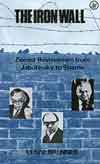 [comments of Michael Jackman, PND member: ….This book, as an introduction to Zionism, functions as a stunning blow to the head. I really have no preconception whatsoever other than feeling happy that some movement had created a Jewish homeland. "Revisionism" in this book doesn't refer to the term know, i.e. a rewriting of history, as in historical revisionism, but to a revision by Jabotinsky and his follower Begin of early Zionist policy to a colonial enterprise of taking the homeland by military force from the residents, who were--well I'm sure most of you more historically savvy people know who we're talking about…. [comments of Michael Jackman, PND member: ….This book, as an introduction to Zionism, functions as a stunning blow to the head. I really have no preconception whatsoever other than feeling happy that some movement had created a Jewish homeland. "Revisionism" in this book doesn't refer to the term know, i.e. a rewriting of history, as in historical revisionism, but to a revision by Jabotinsky and his follower Begin of early Zionist policy to a colonial enterprise of taking the homeland by military force from the residents, who were--well I'm sure most of you more historically savvy people know who we're talking about….
Chomsky, Noam Middle
East Illusions(2003)
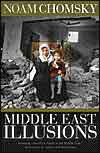 What are the roots of the Israeli-Palestinian conflict and how has it been influenced by the United States? Why has the US-brokered 'peace process' repeatedly failed to deliver peace? What are the prospects for a just resolution? What interests underlie current US strategic doctrines in the Middle East, especially in its redeclared 'war on terrorism' after 9/11 and how do we look beyond them to find more peaceful and viable alternatives? ….Middle East Illusions presents …the myths behind the peace process, the second Palestinian Intifada (which begin in September 2000 and continues today in defiance ofIsraeli repression) and the Bush administration's response to the September 11 attacks on the United States…. What are the roots of the Israeli-Palestinian conflict and how has it been influenced by the United States? Why has the US-brokered 'peace process' repeatedly failed to deliver peace? What are the prospects for a just resolution? What interests underlie current US strategic doctrines in the Middle East, especially in its redeclared 'war on terrorism' after 9/11 and how do we look beyond them to find more peaceful and viable alternatives? ….Middle East Illusions presents …the myths behind the peace process, the second Palestinian Intifada (which begin in September 2000 and continues today in defiance ofIsraeli repression) and the Bush administration's response to the September 11 attacks on the United States….
Friedman, Abraham and Rami Nasrallah (editors)
Divided Cities in Transition Jerusalem
The Berlin urban experts team looks back on their experiences in the days following the collapse of the Berlin Wall. They provide us with two perspectives - the human perspective, their experience as citiens witnessing the dramatic events of those first days of reunification, and their professional perspective as planners, activists and academics on the long and still unfolding process of becoming one society again. The Jerusalem team, not always in agreement, offers its analyses of how things evolved in this conflict-ridden city and, if peace comes, what mechanisms can promote a transition to sustainable peace. Some look forward to an open city serving as the capital of two sovereign states. Others argue that separation is the only pragmatic modus vivendi.
*Fromkin, David
A Peace to End All Peace: Creating the Modern Middle East, 1914-1922
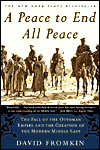 Describes the destruction of the Ottoman empire by the Allies in the First War, and the emergence by 1922 of a new order in the Middle East. The subject has long been confused by special pleading on behalf of the British or the French, Arabs, Jews and other minorities. David Fromkin has given… himself the brief of finding out the truth and nothing but the truth.] [Jewish Chronicle: Outstanding…no one else looking at the roots of the Middle Eastern problem has displayed such persistence in research and ability to see the whole picture, embracing Moscow and Kabul, London and Mecca, Jerusalem and Paris, Cairo and Rome. Describes the destruction of the Ottoman empire by the Allies in the First War, and the emergence by 1922 of a new order in the Middle East. The subject has long been confused by special pleading on behalf of the British or the French, Arabs, Jews and other minorities. David Fromkin has given… himself the brief of finding out the truth and nothing but the truth.] [Jewish Chronicle: Outstanding…no one else looking at the roots of the Middle Eastern problem has displayed such persistence in research and ability to see the whole picture, embracing Moscow and Kabul, London and Mecca, Jerusalem and Paris, Cairo and Rome.
Graham-Brown, Sarah
Palestinians and their Society, 1880-1946
*Hasan, Sana
Enemy in the Promised Land
Hitti, Phillip
History of the Arabs (10th edition, preface by Walid Khalidi
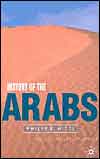 The classic history of the Arab peoples is a work of great thoroughness and insight which contains much to satisfy general readers as well as scholars. Here is the story of the rise of Islam in the Middle Ages, its conquests, its empire, its time of greatness nd of decay, unrolling one of the richest and most instructive panoramas in history. For this reissue of the tenth edition, Walid Khalidi gives a brief overview of the history and content of the book, and emphasizes the vital importance of Philip K. Hitti's magisterial and scholarly work to ongoing attempts to bridge the Arab/Western cultural divide. The classic history of the Arab peoples is a work of great thoroughness and insight which contains much to satisfy general readers as well as scholars. Here is the story of the rise of Islam in the Middle Ages, its conquests, its empire, its time of greatness nd of decay, unrolling one of the richest and most instructive panoramas in history. For this reissue of the tenth edition, Walid Khalidi gives a brief overview of the history and content of the book, and emphasizes the vital importance of Philip K. Hitti's magisterial and scholarly work to ongoing attempts to bridge the Arab/Western cultural divide.
*Hiro, Dilip
Sharing the Promised Land: An Interwoven Tale of Israelis & Palestinians
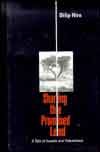 Encyclopedic in scope, … takes in the Western Wall and the Dome of the Rock in Jerusalem and the Tomb of Patriarchs/Ibrhaimi Mosque in Hebron; a Palestinian labourer and an Israeli MP; a hard line Talmudic academy in Jerusalem's Old Town and the Islamic University in Hebron. An outstanding work of reportage and analysis, this book is an enlightening survey of the past and present of Israelis and Palestinians. Encyclopedic in scope, … takes in the Western Wall and the Dome of the Rock in Jerusalem and the Tomb of Patriarchs/Ibrhaimi Mosque in Hebron; a Palestinian labourer and an Israeli MP; a hard line Talmudic academy in Jerusalem's Old Town and the Islamic University in Hebron. An outstanding work of reportage and analysis, this book is an enlightening survey of the past and present of Israelis and Palestinians.
Jayyusi, Salma Khadra, Editor
Anthology of Modern Palestinian Literature
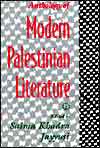 This comprehensive anthology traces the written record of a people beset by nearly a century of conflict, exile and dispersal. This collection includes poetry, fiction, and personal narratives by both established and rising Palestinian creative writers of the modern period. The contributions have been translated by bilingual experts and subsequently polished by English-speaking poets and writers. Also included are the works of Palestinians writing in English, most of whom are in exile in the United States, as well as personal narratives of writers living under the hardship of occupation in the West Bank and Gaza Strip. This comprehensive anthology traces the written record of a people beset by nearly a century of conflict, exile and dispersal. This collection includes poetry, fiction, and personal narratives by both established and rising Palestinian creative writers of the modern period. The contributions have been translated by bilingual experts and subsequently polished by English-speaking poets and writers. Also included are the works of Palestinians writing in English, most of whom are in exile in the United States, as well as personal narratives of writers living under the hardship of occupation in the West Bank and Gaza Strip.
Darwish, Mahmoud
The Adam of Two Edens: poems
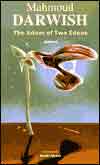 Darwish is indisputably among the greatest of our century's poets. Gifted with tlyric intensity of Lorca, the epic breadth of Neruda, and the elegiac poignancy of mandelstam, he has endured the vicissitudes of politics and fate to perform a meticulous and spiritual excavatio nof land and language, diaspora and exile, while lighting tnew fires in the possibilities for poetic art. (Carolyn Forche) Mahmoud Darwish is the Essential Breath of the Palestinian people….(Naomi Shihab Nye) Darwish is indisputably among the greatest of our century's poets. Gifted with tlyric intensity of Lorca, the epic breadth of Neruda, and the elegiac poignancy of mandelstam, he has endured the vicissitudes of politics and fate to perform a meticulous and spiritual excavatio nof land and language, diaspora and exile, while lighting tnew fires in the possibilities for poetic art. (Carolyn Forche) Mahmoud Darwish is the Essential Breath of the Palestinian people….(Naomi Shihab Nye)
*Kanafani, Ghassan
Men in the Sun and Other Palestinian Stories
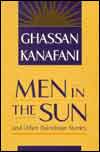 This collection of important stories by novelist, journalist, teacher and Palestinian activist Ghassan Kanafani includes the stunning novella Men in the Sun (1962), the basis of the film The Deceived. ….In the unsparing clarity of his writing, Kanafani offers the reader a gritty look at the agonized world of Palestine and the adjoining Middle East. Born in Acre (northern Palestine) in 1936, Ghassan Kanafani was a major spokesman for the Popular Front for the Liberation of Palestine and founding editor of its weekly mabgazine Al-Hadaf. His novels, short stories and plays have been published in sixteen languages. He was killed in a car-bomb explosion in Beirut in 1972. This collection of important stories by novelist, journalist, teacher and Palestinian activist Ghassan Kanafani includes the stunning novella Men in the Sun (1962), the basis of the film The Deceived. ….In the unsparing clarity of his writing, Kanafani offers the reader a gritty look at the agonized world of Palestine and the adjoining Middle East. Born in Acre (northern Palestine) in 1936, Ghassan Kanafani was a major spokesman for the Popular Front for the Liberation of Palestine and founding editor of its weekly mabgazine Al-Hadaf. His novels, short stories and plays have been published in sixteen languages. He was killed in a car-bomb explosion in Beirut in 1972.
*Kanafani, Ghassan
Palestine's Children: Returning to Haifa and other stories
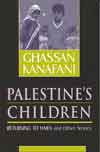 Politics and the novel, Ghassan Kanafani once wrote, are an indivisible case. Fadl al-Naqib reflected that Kanafani wrote the Palestinian story, then he was written by it. His fiction offers entry into the Palestinian experience of a conflict that has anguished the people of the Middle East for more than a century - and that caused his own death…… Kanafani's Palestine's Children explore the need to recover the past, the lost homeland, by action. They emerged from the author;s keen understanding of a bitter political situation. But their deeper gift is to reveal in literature the plight of oppressed peoples everywhere. Politics and the novel, Ghassan Kanafani once wrote, are an indivisible case. Fadl al-Naqib reflected that Kanafani wrote the Palestinian story, then he was written by it. His fiction offers entry into the Palestinian experience of a conflict that has anguished the people of the Middle East for more than a century - and that caused his own death…… Kanafani's Palestine's Children explore the need to recover the past, the lost homeland, by action. They emerged from the author;s keen understanding of a bitter political situation. But their deeper gift is to reveal in literature the plight of oppressed peoples everywhere.
Khamaisi, Rassem and Rami Nasrallah (editors)
The Jerusalem Urban Fabric: Demography, Infrastructure, and Institutions
One day negotiators will gather at a table to discuss the 'final settlement' of the Jerusalem question. Will it be an open capital of two sovereign states or a border city cleaved by physical barriers? Will Jerusalem retain its glorious status as the shrine of the world's three monotheistic religions? Those who seek accurate, detailed and concrete data on the status of Jerusalem today and an informed perspective on its potential future will be well served by (this book). The studies …. Offer expert analyses by Palestinian and international scholars and urban planners who have been engaged for several years, examining the data, the ideas and the issues that will provide the context for the final negotiations and future arrangements of the Holy City….
*Khalidi, Walid, Editor
All That Remains: The Palestinian Villages Occupied and Depopulated by Israel in 1948
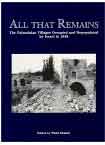 This authoritative reference work describes in detail the more than 400 Palestinian villages that were destroyed or depopulated by Israel in 1948. Little of these once-thriving communities remains; not only have they been erased from the Palestinian landscape, their very names have been removed from contemporary Israeli maps. But to hundreds of thousands of Palestinians living in their diaspora, these villages were home, and continue to be poignantly powerful symbols of their personal and national identity….Unlike earlier studies, it has relied extensively on field research to pinpoint the precise location of village sites through former residents and local guides. This authoritative reference work describes in detail the more than 400 Palestinian villages that were destroyed or depopulated by Israel in 1948. Little of these once-thriving communities remains; not only have they been erased from the Palestinian landscape, their very names have been removed from contemporary Israeli maps. But to hundreds of thousands of Palestinians living in their diaspora, these villages were home, and continue to be poignantly powerful symbols of their personal and national identity….Unlike earlier studies, it has relied extensively on field research to pinpoint the precise location of village sites through former residents and local guides.
*Khalifeh, Sahar (2000)
Wild Thorns
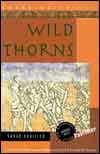 Originally published in Arabic as Al-Subar, 1976, by Galileo Limited, Jerusalem. English translation by Trevor Le Gassic and Elizabeth Fernea [From the jacket: Wild Thorns is a chronicle of life in the Israeli-occupied West Bank. … compelling novel ..rich with insights into the unspoken feelings of Palestinians. … successfully conveys… the flavor of the Palestinian idiom and sense of humor, as well as the Palestinian determination to survive. … Written in Arabic in the West Bank and first published in Jerusalem… panorama of characters and unsentimental portrayals of everyday life, is the first Arab novel to give a true picture of social and personal relations under the occupation. Its convincing sincerity, uncompromising honesty, and rich emotional texture plead elegantly for the cause of survival in the face of oppression. Originally published in Arabic as Al-Subar, 1976, by Galileo Limited, Jerusalem. English translation by Trevor Le Gassic and Elizabeth Fernea [From the jacket: Wild Thorns is a chronicle of life in the Israeli-occupied West Bank. … compelling novel ..rich with insights into the unspoken feelings of Palestinians. … successfully conveys… the flavor of the Palestinian idiom and sense of humor, as well as the Palestinian determination to survive. … Written in Arabic in the West Bank and first published in Jerusalem… panorama of characters and unsentimental portrayals of everyday life, is the first Arab novel to give a true picture of social and personal relations under the occupation. Its convincing sincerity, uncompromising honesty, and rich emotional texture plead elegantly for the cause of survival in the face of oppression.
Kimmerling, Baruch & Joel S. Migdal
The Palestinian People: a history
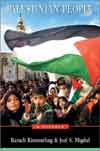 In a timely reminder of how the past informs the present, Baruch Kimmerling and Joel Migdal offer an authoritative account of the history of the Palestinian peole from their modern origins to the Oslo peace process and beyond. Palestinians struggled to creat themselves as a people from the first revolt of the Arabs in Palestine in 1834 through th eBritish Mandate to the impact of Zionism and the founding of Israel. Their relationship with the Jewish people and the State of Israel has een fundamental in shaping that identity, and today Palestinians find themselves again at the critical juncture. In a timely reminder of how the past informs the present, Baruch Kimmerling and Joel Migdal offer an authoritative account of the history of the Palestinian peole from their modern origins to the Oslo peace process and beyond. Palestinians struggled to creat themselves as a people from the first revolt of the Arabs in Palestine in 1834 through th eBritish Mandate to the impact of Zionism and the founding of Israel. Their relationship with the Jewish people and the State of Israel has een fundamental in shaping that identity, and today Palestinians find themselves again at the critical juncture.
*Laqueur, Walter and Barry Rubin, Editors
The Israel-Arab Reader: A Documentary history of the Middle East Conflict
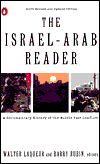 A completely up-to-date- documentary history of he continuing Middle East Crisis. Covring the full spectrum of the Israel-Arab conflict, from the earliest days, through wars and the peacemaking efforts of the Camp David agreements, up to the Israel-PLO and Israel-Jordan peace accords, this comprehensive and thorough book presents speeches, letters, treatises, and reports dealing with all the major interests in the new areaa - from such influential figures as Jimmy Carter, Anwar Sadat, Menachem Begin and Ronald Reagan. Now updated and revised throughout, The Israel-Arab Reader contains a new section of forty key documents and statements by yasser Arafat, Bill Clinton, King Hussein, Yitzak Rabin, and others that make it a truly contempory source. Historians and Middle East specialists Walter Laqueur and Barry Ruin have arranged the material chronologically and without bias. The viewpoint of all the individual parties - Arab governments, Israel, Palestnians, Russia, and the United States- are presented in full. A completely up-to-date- documentary history of he continuing Middle East Crisis. Covring the full spectrum of the Israel-Arab conflict, from the earliest days, through wars and the peacemaking efforts of the Camp David agreements, up to the Israel-PLO and Israel-Jordan peace accords, this comprehensive and thorough book presents speeches, letters, treatises, and reports dealing with all the major interests in the new areaa - from such influential figures as Jimmy Carter, Anwar Sadat, Menachem Begin and Ronald Reagan. Now updated and revised throughout, The Israel-Arab Reader contains a new section of forty key documents and statements by yasser Arafat, Bill Clinton, King Hussein, Yitzak Rabin, and others that make it a truly contempory source. Historians and Middle East specialists Walter Laqueur and Barry Ruin have arranged the material chronologically and without bias. The viewpoint of all the individual parties - Arab governments, Israel, Palestnians, Russia, and the United States- are presented in full.
Leibowitz, Yeshayahu (Goldman Eliezer, editor)
Judaism, Human Values, and the Jewish State
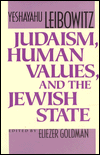 A New York Times notable book of 1992. Yeshayahu Leibowitz was head of the Biological Chemistry Department at the Hebrew University and Professor of Neurophysiology, Hebrew University Medical School.. ….He is the conscience of Israel: the clearest and most honorable champion of those principles which justify the creation of a movement and of a sovereign state achieved at so high a human cost both to the Jewish nation and to all its neighbors (Isaiah Berlin). A New York Times notable book of 1992. Yeshayahu Leibowitz was head of the Biological Chemistry Department at the Hebrew University and Professor of Neurophysiology, Hebrew University Medical School.. ….He is the conscience of Israel: the clearest and most honorable champion of those principles which justify the creation of a movement and of a sovereign state achieved at so high a human cost both to the Jewish nation and to all its neighbors (Isaiah Berlin).
Maalouf, Amin
Leo Africanus
 I, Hasan the son of Muhammad the weigh-master, I, Jean-Leon de Medici, circumcised at the hand of a barber and baptized at the hand of a pope, I am now called the African, but I am not from Africa, nor from Europe, nor from Arabia. I am also called the Granadan, the Fassi, the Zayyati, but I come from no country, from no city, no tribe. I am the son of the road, my country is the caravan, my life the most unexpected of voyages. I, Hasan the son of Muhammad the weigh-master, I, Jean-Leon de Medici, circumcised at the hand of a barber and baptized at the hand of a pope, I am now called the African, but I am not from Africa, nor from Europe, nor from Arabia. I am also called the Granadan, the Fassi, the Zayyati, but I come from no country, from no city, no tribe. I am the son of the road, my country is the caravan, my life the most unexpected of voyages.
Maalouf, Amin
The Crusades through Arab Eyes
McCullough, David
Truman
*Morris, Benny
Israel's Border Wars 1948-1956: Arab Infiltration, Israeli Retaliation and the Countdown to the Suez War
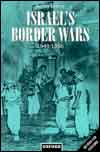 This revised and updated paperback edition of a highly successful study looks at the development of Israeli - Arab relations during the formative years 1949 to 1956, focusing on Arab infiltration into Israel and Israeli retaliation. Palestinian refugee raiding and cross-border attacks by Egyptian-controlled irregulars and commandos were a core phenomenon during this period and one of the chief causes of Israel's invasion of Egypt in 1956. This pioneering study, which has been expanded on the basis of much new, and recently declassified ;material from the IDF, deepens our understanding of the current situation in the Middle East, and of the prospects for a lasting peace there. This revised and updated paperback edition of a highly successful study looks at the development of Israeli - Arab relations during the formative years 1949 to 1956, focusing on Arab infiltration into Israel and Israeli retaliation. Palestinian refugee raiding and cross-border attacks by Egyptian-controlled irregulars and commandos were a core phenomenon during this period and one of the chief causes of Israel's invasion of Egypt in 1956. This pioneering study, which has been expanded on the basis of much new, and recently declassified ;material from the IDF, deepens our understanding of the current situation in the Middle East, and of the prospects for a lasting peace there.
*Morris, Benny
Righteous Victims: A History of the Zionist-Arab Conflict, 1881-2001
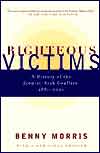 In this comprehensive and objective account, eminent Israeli historian Benny Morris presents an epic history of Zionist-Arab relations over the past 120 years. Exploding the myths cherished by both sides, Morris finds the roots of the conflict in the deep religious, ethnic and political differences between the Zionist immigrants and the native Arab population of Palestine. Tracing the origins of political Zionism back to the pogroms of Russia and the Dreyfus Affair, Morris describes the gradual influx of Jewish settlers into Palestine and the resistance by its Arabs and the surrounding Arab States to the establishment of the State of Israel. He examines the first Arab-Israeli war of 1948 and each of the subsequent wars and peace efforts, culminating in the peace process initiated by the Rabin and Barak governments and the subsequent return to violence with the second Palestinian Intifada. Studded with illuminating portraits of the major protagonists - including David Ben-Gurion, Hajj Amin al-Husseini, and Golda Meir - Righteous Victims provides an authoritative account of the Middle East conflict and the continuing struggle toward peace. In this comprehensive and objective account, eminent Israeli historian Benny Morris presents an epic history of Zionist-Arab relations over the past 120 years. Exploding the myths cherished by both sides, Morris finds the roots of the conflict in the deep religious, ethnic and political differences between the Zionist immigrants and the native Arab population of Palestine. Tracing the origins of political Zionism back to the pogroms of Russia and the Dreyfus Affair, Morris describes the gradual influx of Jewish settlers into Palestine and the resistance by its Arabs and the surrounding Arab States to the establishment of the State of Israel. He examines the first Arab-Israeli war of 1948 and each of the subsequent wars and peace efforts, culminating in the peace process initiated by the Rabin and Barak governments and the subsequent return to violence with the second Palestinian Intifada. Studded with illuminating portraits of the major protagonists - including David Ben-Gurion, Hajj Amin al-Husseini, and Golda Meir - Righteous Victims provides an authoritative account of the Middle East conflict and the continuing struggle toward peace.
*Said, Edward was a University Professor at Columbia University, where he has taught English and Comparative Literature since 1963. He was born in Jerusalem in 1935 and educated at Victoria College, Cairo, Mount Hermon School, Massachusetts, and at Princeton and Harvard universities. In 1974 he was Visiting Professor of Comparative Literature at Harvard, in 1975-6 Fellow of the Center for Advanced Study in Behavioral Science at Stanford, and in 1979 Visiting Professor of Humanities at Johns Hopkins University. He was editor of the Arab Studies Quarterly, and a member of the Council of Foreign Relations, New York, the American Academy of Arts and Sciences and the executive board of PEN. He has received Harvard University's Bowdoin Prize and the Lionel Trilling Award in 1976 and 1994.
*Said, Edward
Orientalism
*Said, Edward
The Question of Palestine
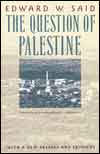 When it was first published in this country (USA) in 1977, this original and deeply provocative book made Palestine the subject of a serious debate - one that is now more critical than ever. With the rigorous scholarship that he brought to his influential Orientalism and an exile's passion (he is Palestinian by birth and has been a member of the Palestine National Council), Edward W. Said traces the fatal collision between two peoples in the Middle East and its repercussions in the lives of both the occupier and the occupied - as well as in the conscience of the West. He has now updated this landmark work to portray the changed status of Palestine and its people in light of such developments as the Israeli invasion of Lebanon, the intifada, the Gulf War, and the ongoing Middle East peace initiative. When it was first published in this country (USA) in 1977, this original and deeply provocative book made Palestine the subject of a serious debate - one that is now more critical than ever. With the rigorous scholarship that he brought to his influential Orientalism and an exile's passion (he is Palestinian by birth and has been a member of the Palestine National Council), Edward W. Said traces the fatal collision between two peoples in the Middle East and its repercussions in the lives of both the occupier and the occupied - as well as in the conscience of the West. He has now updated this landmark work to portray the changed status of Palestine and its people in light of such developments as the Israeli invasion of Lebanon, the intifada, the Gulf War, and the ongoing Middle East peace initiative.
*Said, Edward
Culture and Imperialism
*Said, Edward
Out of Place: A Memoir
*Said, Edward
The End of the Peace Process: Oslo and After
*Said, Edward
Peace and its Discontents: Gaza to Jericho 1993-1995
Segev, Tom
The Seventh Million: The Israelis and the Holocaust
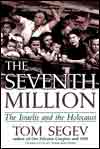 The first book to show the decisive impact of the Holocaust on the identity, ideology and politics of Israel. Drawing on diaries, interviews, and thousands of declassified documents, Tom Segev reconsiders the major struggles and personalities of Israel's past, including Ben-Gurion, Begin, and Nahum Goldmann, and argues that the nation's legacy has, at critical moments - the Exodus affair, the Eichmann trial, the case of John Demjanjuk - been molded and manipulated in accordance with the ideological requirements of the state. The Seventh Million uncovers a vast and complex story and reveals how the bitter events of decades past continue to shape the experiences not just of individuals but of a nation. A groundbreaking examination of the most charged historical events of the century - the Holocaust, the birth of Israel, and the relation between the two. The first book to show the decisive impact of the Holocaust on the identity, ideology and politics of Israel. Drawing on diaries, interviews, and thousands of declassified documents, Tom Segev reconsiders the major struggles and personalities of Israel's past, including Ben-Gurion, Begin, and Nahum Goldmann, and argues that the nation's legacy has, at critical moments - the Exodus affair, the Eichmann trial, the case of John Demjanjuk - been molded and manipulated in accordance with the ideological requirements of the state. The Seventh Million uncovers a vast and complex story and reveals how the bitter events of decades past continue to shape the experiences not just of individuals but of a nation. A groundbreaking examination of the most charged historical events of the century - the Holocaust, the birth of Israel, and the relation between the two.
*Shindler, Colin
The Land Beyond Promise; Israel, Likud and the Zionist Dream
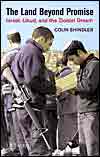 This is the first book to appraise critically the Likud both in and out of government up until 2001 and the version of Zionism that is central to the Likud's ideology. From Begin and Shamir to Netanyahu and Sharon, Shindler analyses the political and ideological history of Zionism as presented by the Likud. Looking beyond propaganda and myths of both left and right, The Land Beyond Promise provides the essential background to understanding the current crisis including the aftermath of the horrific terrorist attacks in America and possible outcomes between Israel and the Palestinian territories. This is the first book to appraise critically the Likud both in and out of government up until 2001 and the version of Zionism that is central to the Likud's ideology. From Begin and Shamir to Netanyahu and Sharon, Shindler analyses the political and ideological history of Zionism as presented by the Likud. Looking beyond propaganda and myths of both left and right, The Land Beyond Promise provides the essential background to understanding the current crisis including the aftermath of the horrific terrorist attacks in America and possible outcomes between Israel and the Palestinian territories.
*Shlaim, Avi
The Iron Wall: Israel and the Arab World
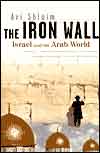 In the 1920s, hard-line Zionists developed the doctrine of the Iron Wall: negotiations with the Arabs must always be from a position of military strength. This doctrine, argues Avi Shlaim, became central to Israeli policy; dissenters were marginalized and many opportunities lost. Drawing in a great deal of new material and interviews with many key participants, Shlaim places Israel's political and military actions under an uncompromising lens. The result is a fresh and informed account of one of the world's most intractable conflicts of modern times. In the 1920s, hard-line Zionists developed the doctrine of the Iron Wall: negotiations with the Arabs must always be from a position of military strength. This doctrine, argues Avi Shlaim, became central to Israeli policy; dissenters were marginalized and many opportunities lost. Drawing in a great deal of new material and interviews with many key participants, Shlaim places Israel's political and military actions under an uncompromising lens. The result is a fresh and informed account of one of the world's most intractable conflicts of modern times.
Shapira, Anita
Land and Power, The Zionist Resort to Force, 1881-1948
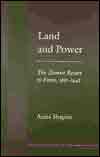 Land and Power traces the history of attitudes toward power and the use of armed force within the Zionist movement - from an early period in which most leaders espoused an ideal of peaceful settlement in Palesttine, to the acceptance of force as a legitimate tool for achieving a sovereign Jewish State. Anita Shapira is a Professor of Jewish History at Tel Aviv University. Land and Power traces the history of attitudes toward power and the use of armed force within the Zionist movement - from an early period in which most leaders espoused an ideal of peaceful settlement in Palesttine, to the acceptance of force as a legitimate tool for achieving a sovereign Jewish State. Anita Shapira is a Professor of Jewish History at Tel Aviv University.
*Shipler, David
Arab and Jew
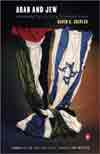 The Jew, according to the Arab stereotype, is a brutal, violent coward; the Arab, to the prejudiced Jew, is a primitive creature of animal vengeance and cruel desires. In this monumental work, David Shipler delves into the origins of the prejudices that have been intensified by war, terrorism, and nationalism. Focusing on the diverse cultures that exist side by side in Israel and Israel-controlled territories, Shipler examines the process of indoctrination that begins in schools; he discusses the far-ranging effects of socioeconomic differences, historical conflicts between Islam and Judaism, attitudes about the Holocaust, and much more. And he writes of the people: the Arab woman in love with a Jew, the retired Israeli military officer, the Palestinian guerrilla, the handsome actor whose father is Arab and whose mother is Jewish. For Shipler and all who read this book, their stories and hundreds of others reflect not only the reality of 'wounded spirits' but a glimmer of hope in the Promised Land. The Jew, according to the Arab stereotype, is a brutal, violent coward; the Arab, to the prejudiced Jew, is a primitive creature of animal vengeance and cruel desires. In this monumental work, David Shipler delves into the origins of the prejudices that have been intensified by war, terrorism, and nationalism. Focusing on the diverse cultures that exist side by side in Israel and Israel-controlled territories, Shipler examines the process of indoctrination that begins in schools; he discusses the far-ranging effects of socioeconomic differences, historical conflicts between Islam and Judaism, attitudes about the Holocaust, and much more. And he writes of the people: the Arab woman in love with a Jew, the retired Israeli military officer, the Palestinian guerrilla, the handsome actor whose father is Arab and whose mother is Jewish. For Shipler and all who read this book, their stories and hundreds of others reflect not only the reality of 'wounded spirits' but a glimmer of hope in the Promised Land.
Soueif, Ahdaf
In the Eye of the Sun
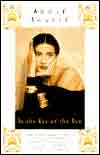 Set amidst the turmoil of contemporary Middle Eastern politics, this marvelously vivid novel by an Egyptian journalist is an intimate look into the often hidden lives of Arab women today. It tells the story of Asya, a brilliant young woman who grows up in the luxurious world of the Egyptian elite, marries a Westernized husband, and pursues graduate study in England, where she becomes embroiled in a love affair with an Englishman. Set amidst the turmoil of contemporary Middle Eastern politics, this marvelously vivid novel by an Egyptian journalist is an intimate look into the often hidden lives of Arab women today. It tells the story of Asya, a brilliant young woman who grows up in the luxurious world of the Egyptian elite, marries a Westernized husband, and pursues graduate study in England, where she becomes embroiled in a love affair with an Englishman.
Yeshoshua, A. B.
A Journey to the End of the Millenium: a novel of the Middle Ages
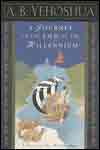 It is the year 999 and Ben Attar, a Jewish merchant from Tangiers, along with his two wives and Muslim business partner, undertakes his annual voyage to Europe. Through this trip, Attar hopes to advance his trading interests in Paris and other cities abroad as well as preserve his business partnerships, now made uncertain due to his bigamous marriage. The journey is the beginning of a human drama filled with moral conflicts of fidelity and desire - as well as issues of faith and religious code and how it emanates from the flesh as much as from the heart and mind. Yehoshua explores the deepest questions of humanity, issues that still resonate a thousand years later. It is the year 999 and Ben Attar, a Jewish merchant from Tangiers, along with his two wives and Muslim business partner, undertakes his annual voyage to Europe. Through this trip, Attar hopes to advance his trading interests in Paris and other cities abroad as well as preserve his business partnerships, now made uncertain due to his bigamous marriage. The journey is the beginning of a human drama filled with moral conflicts of fidelity and desire - as well as issues of faith and religious code and how it emanates from the flesh as much as from the heart and mind. Yehoshua explores the deepest questions of humanity, issues that still resonate a thousand years later.
|






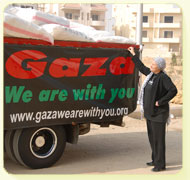



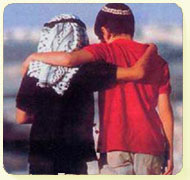

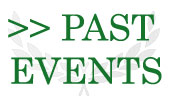




 One of the greatest of the world religions through the 1500 years of its existence, Islam has also been by far the most misunderstood. The Western world has undergone a complete revolution of thought in recent centuries, but its mistrust of Islam is still essentially medieval. …Karen Armstrong's book cuts through the clich้ to reveal a faith which has inspired as many scholars, mystics and poets as soldiers. Islam, she makes clear, has not only been one of the world's most important and inspiring religions, but the basis for one of its most illustrious civilizations.
One of the greatest of the world religions through the 1500 years of its existence, Islam has also been by far the most misunderstood. The Western world has undergone a complete revolution of thought in recent centuries, but its mistrust of Islam is still essentially medieval. …Karen Armstrong's book cuts through the clich้ to reveal a faith which has inspired as many scholars, mystics and poets as soldiers. Islam, she makes clear, has not only been one of the world's most important and inspiring religions, but the basis for one of its most illustrious civilizations.  Hanan Ashrawi is the founder of the Palestinian Independent Commission for Citizens' Rights, a former spokesperson for the leadership of the Palestinians in the Occupied Territories and a professor of English at Birzeit University in Ramallah, Palestine. This is her story of the Palestinan struggle for recognition and movement for peace.
Hanan Ashrawi is the founder of the Palestinian Independent Commission for Citizens' Rights, a former spokesperson for the leadership of the Palestinians in the Occupied Territories and a professor of English at Birzeit University in Ramallah, Palestine. This is her story of the Palestinan struggle for recognition and movement for peace.  As a young man, Meron Benvenisti often accompanied his father, a distinguished geographer, when the elder Benvenisti traveled through the Holy Land charting a Hebrew ap that would rename Palestinian sites and villages with names linked to Israel's ancestral homeland. Benvenisti's youthful experiences are central to this book, and his story helps explain how an Arab landscape, both physical and human, was transformed into an Israeli, Jewish state. Benvenisti discusses the process by which new Hebrew nomenclature replaced the Arabic names of more than 9000 natural features, villages, and ruins in Eretz Israel/Palestine (his name for the Holy Land, thereby defining it as a land of Jews and Arabs). He then explains how the Arab landscape has been transformed through war, destruction, and expulsion into a flourishing Jewish homeland accommodating millions of immigrants. The resulting encounters between two peoples who claim the same land have raised great moral and political dilemmas, which Benvenisti presents with candor and impartiality. Benvenisti points out that five hundred years after the Moors left Spain, sufficient landmarks remain to preserve the outlines of Muslim Spain. Even with the sustained modern development, the ancient scale is still visible. Yet a Palestinian returning to his ancestral landscape after only fiftyyears would have difficulty identifying his home. Furthermore, Benvenisti says, the transformation of Arab cultural assets into Jewish holy sites has engendered a struggle over the 'signposts of memory' essential to both peoples. Sacred Landscape raises some troublesome questions that most writers on the Middle East avoid. The now-buried Palestinian landscape remains a symbol and a battle standard for Palestinians and Israelis. But it is Benvenisti's belief that Eretz Israel/Palestine has enough historical and physical space for the people of both nations and that it can one day be a shared homeland.
As a young man, Meron Benvenisti often accompanied his father, a distinguished geographer, when the elder Benvenisti traveled through the Holy Land charting a Hebrew ap that would rename Palestinian sites and villages with names linked to Israel's ancestral homeland. Benvenisti's youthful experiences are central to this book, and his story helps explain how an Arab landscape, both physical and human, was transformed into an Israeli, Jewish state. Benvenisti discusses the process by which new Hebrew nomenclature replaced the Arabic names of more than 9000 natural features, villages, and ruins in Eretz Israel/Palestine (his name for the Holy Land, thereby defining it as a land of Jews and Arabs). He then explains how the Arab landscape has been transformed through war, destruction, and expulsion into a flourishing Jewish homeland accommodating millions of immigrants. The resulting encounters between two peoples who claim the same land have raised great moral and political dilemmas, which Benvenisti presents with candor and impartiality. Benvenisti points out that five hundred years after the Moors left Spain, sufficient landmarks remain to preserve the outlines of Muslim Spain. Even with the sustained modern development, the ancient scale is still visible. Yet a Palestinian returning to his ancestral landscape after only fiftyyears would have difficulty identifying his home. Furthermore, Benvenisti says, the transformation of Arab cultural assets into Jewish holy sites has engendered a struggle over the 'signposts of memory' essential to both peoples. Sacred Landscape raises some troublesome questions that most writers on the Middle East avoid. The now-buried Palestinian landscape remains a symbol and a battle standard for Palestinians and Israelis. But it is Benvenisti's belief that Eretz Israel/Palestine has enough historical and physical space for the people of both nations and that it can one day be a shared homeland.  Covering the main events between Israel and its Arab neighbors during the past fifty years - from its earliest attempts to establish itself, through the Six Day War in 1967 and the Lebanon War in 1982, to the peace negotiations of this decade - this is the definitive insiders' account of war and peace in the Middle East. … Published to accompany a six-part BBC television series by the makers of the award-winning Death of Yugoslavia, this ground-breaking book exposes some of the long-held myths about events in the Middle East. Drawing on candid in-depth interviews with key figures in the struggles - from both Israel and its Arab neighbours… It is the first balanced account of behind-the-scenes negotiations and intrigues.
Covering the main events between Israel and its Arab neighbors during the past fifty years - from its earliest attempts to establish itself, through the Six Day War in 1967 and the Lebanon War in 1982, to the peace negotiations of this decade - this is the definitive insiders' account of war and peace in the Middle East. … Published to accompany a six-part BBC television series by the makers of the award-winning Death of Yugoslavia, this ground-breaking book exposes some of the long-held myths about events in the Middle East. Drawing on candid in-depth interviews with key figures in the struggles - from both Israel and its Arab neighbours… It is the first balanced account of behind-the-scenes negotiations and intrigues. [comments of Michael Jackman, PND member: ….This book, as an introduction to Zionism, functions as a stunning blow to the head. I really have no preconception whatsoever other than feeling happy that some movement had created a Jewish homeland. "Revisionism" in this book doesn't refer to the term know, i.e. a rewriting of history, as in historical revisionism, but to a revision by Jabotinsky and his follower Begin of early Zionist policy to a colonial enterprise of taking the homeland by military force from the residents, who were--well I'm sure most of you more historically savvy people know who we're talking about….
[comments of Michael Jackman, PND member: ….This book, as an introduction to Zionism, functions as a stunning blow to the head. I really have no preconception whatsoever other than feeling happy that some movement had created a Jewish homeland. "Revisionism" in this book doesn't refer to the term know, i.e. a rewriting of history, as in historical revisionism, but to a revision by Jabotinsky and his follower Begin of early Zionist policy to a colonial enterprise of taking the homeland by military force from the residents, who were--well I'm sure most of you more historically savvy people know who we're talking about….  What are the roots of the Israeli-Palestinian conflict and how has it been influenced by the United States? Why has the US-brokered 'peace process' repeatedly failed to deliver peace? What are the prospects for a just resolution? What interests underlie current US strategic doctrines in the Middle East, especially in its redeclared 'war on terrorism' after 9/11 and how do we look beyond them to find more peaceful and viable alternatives? ….Middle East Illusions presents …the myths behind the peace process, the second Palestinian Intifada (which begin in September 2000 and continues today in defiance ofIsraeli repression) and the Bush administration's response to the September 11 attacks on the United States….
What are the roots of the Israeli-Palestinian conflict and how has it been influenced by the United States? Why has the US-brokered 'peace process' repeatedly failed to deliver peace? What are the prospects for a just resolution? What interests underlie current US strategic doctrines in the Middle East, especially in its redeclared 'war on terrorism' after 9/11 and how do we look beyond them to find more peaceful and viable alternatives? ….Middle East Illusions presents …the myths behind the peace process, the second Palestinian Intifada (which begin in September 2000 and continues today in defiance ofIsraeli repression) and the Bush administration's response to the September 11 attacks on the United States….  Describes the destruction of the Ottoman empire by the Allies in the First War, and the emergence by 1922 of a new order in the Middle East. The subject has long been confused by special pleading on behalf of the British or the French, Arabs, Jews and other minorities. David Fromkin has given… himself the brief of finding out the truth and nothing but the truth.] [Jewish Chronicle: Outstanding…no one else looking at the roots of the Middle Eastern problem has displayed such persistence in research and ability to see the whole picture, embracing Moscow and Kabul, London and Mecca, Jerusalem and Paris, Cairo and Rome.
Describes the destruction of the Ottoman empire by the Allies in the First War, and the emergence by 1922 of a new order in the Middle East. The subject has long been confused by special pleading on behalf of the British or the French, Arabs, Jews and other minorities. David Fromkin has given… himself the brief of finding out the truth and nothing but the truth.] [Jewish Chronicle: Outstanding…no one else looking at the roots of the Middle Eastern problem has displayed such persistence in research and ability to see the whole picture, embracing Moscow and Kabul, London and Mecca, Jerusalem and Paris, Cairo and Rome.  The classic history of the Arab peoples is a work of great thoroughness and insight which contains much to satisfy general readers as well as scholars. Here is the story of the rise of Islam in the Middle Ages, its conquests, its empire, its time of greatness nd of decay, unrolling one of the richest and most instructive panoramas in history. For this reissue of the tenth edition, Walid Khalidi gives a brief overview of the history and content of the book, and emphasizes the vital importance of Philip K. Hitti's magisterial and scholarly work to ongoing attempts to bridge the Arab/Western cultural divide.
The classic history of the Arab peoples is a work of great thoroughness and insight which contains much to satisfy general readers as well as scholars. Here is the story of the rise of Islam in the Middle Ages, its conquests, its empire, its time of greatness nd of decay, unrolling one of the richest and most instructive panoramas in history. For this reissue of the tenth edition, Walid Khalidi gives a brief overview of the history and content of the book, and emphasizes the vital importance of Philip K. Hitti's magisterial and scholarly work to ongoing attempts to bridge the Arab/Western cultural divide.  Encyclopedic in scope, … takes in the Western Wall and the Dome of the Rock in Jerusalem and the Tomb of Patriarchs/Ibrhaimi Mosque in Hebron; a Palestinian labourer and an Israeli MP; a hard line Talmudic academy in Jerusalem's Old Town and the Islamic University in Hebron. An outstanding work of reportage and analysis, this book is an enlightening survey of the past and present of Israelis and Palestinians.
Encyclopedic in scope, … takes in the Western Wall and the Dome of the Rock in Jerusalem and the Tomb of Patriarchs/Ibrhaimi Mosque in Hebron; a Palestinian labourer and an Israeli MP; a hard line Talmudic academy in Jerusalem's Old Town and the Islamic University in Hebron. An outstanding work of reportage and analysis, this book is an enlightening survey of the past and present of Israelis and Palestinians.  This comprehensive anthology traces the written record of a people beset by nearly a century of conflict, exile and dispersal. This collection includes poetry, fiction, and personal narratives by both established and rising Palestinian creative writers of the modern period. The contributions have been translated by bilingual experts and subsequently polished by English-speaking poets and writers. Also included are the works of Palestinians writing in English, most of whom are in exile in the United States, as well as personal narratives of writers living under the hardship of occupation in the West Bank and Gaza Strip.
This comprehensive anthology traces the written record of a people beset by nearly a century of conflict, exile and dispersal. This collection includes poetry, fiction, and personal narratives by both established and rising Palestinian creative writers of the modern period. The contributions have been translated by bilingual experts and subsequently polished by English-speaking poets and writers. Also included are the works of Palestinians writing in English, most of whom are in exile in the United States, as well as personal narratives of writers living under the hardship of occupation in the West Bank and Gaza Strip.  Darwish is indisputably among the greatest of our century's poets. Gifted with tlyric intensity of Lorca, the epic breadth of Neruda, and the elegiac poignancy of mandelstam, he has endured the vicissitudes of politics and fate to perform a meticulous and spiritual excavatio nof land and language, diaspora and exile, while lighting tnew fires in the possibilities for poetic art. (Carolyn Forche) Mahmoud Darwish is the Essential Breath of the Palestinian people….(Naomi Shihab Nye)
Darwish is indisputably among the greatest of our century's poets. Gifted with tlyric intensity of Lorca, the epic breadth of Neruda, and the elegiac poignancy of mandelstam, he has endured the vicissitudes of politics and fate to perform a meticulous and spiritual excavatio nof land and language, diaspora and exile, while lighting tnew fires in the possibilities for poetic art. (Carolyn Forche) Mahmoud Darwish is the Essential Breath of the Palestinian people….(Naomi Shihab Nye)  This collection of important stories by novelist, journalist, teacher and Palestinian activist Ghassan Kanafani includes the stunning novella Men in the Sun (1962), the basis of the film The Deceived. ….In the unsparing clarity of his writing, Kanafani offers the reader a gritty look at the agonized world of Palestine and the adjoining Middle East. Born in Acre (northern Palestine) in 1936, Ghassan Kanafani was a major spokesman for the Popular Front for the Liberation of Palestine and founding editor of its weekly mabgazine Al-Hadaf. His novels, short stories and plays have been published in sixteen languages. He was killed in a car-bomb explosion in Beirut in 1972.
This collection of important stories by novelist, journalist, teacher and Palestinian activist Ghassan Kanafani includes the stunning novella Men in the Sun (1962), the basis of the film The Deceived. ….In the unsparing clarity of his writing, Kanafani offers the reader a gritty look at the agonized world of Palestine and the adjoining Middle East. Born in Acre (northern Palestine) in 1936, Ghassan Kanafani was a major spokesman for the Popular Front for the Liberation of Palestine and founding editor of its weekly mabgazine Al-Hadaf. His novels, short stories and plays have been published in sixteen languages. He was killed in a car-bomb explosion in Beirut in 1972.  Politics and the novel, Ghassan Kanafani once wrote, are an indivisible case. Fadl al-Naqib reflected that Kanafani wrote the Palestinian story, then he was written by it. His fiction offers entry into the Palestinian experience of a conflict that has anguished the people of the Middle East for more than a century - and that caused his own death…… Kanafani's Palestine's Children explore the need to recover the past, the lost homeland, by action. They emerged from the author;s keen understanding of a bitter political situation. But their deeper gift is to reveal in literature the plight of oppressed peoples everywhere.
Politics and the novel, Ghassan Kanafani once wrote, are an indivisible case. Fadl al-Naqib reflected that Kanafani wrote the Palestinian story, then he was written by it. His fiction offers entry into the Palestinian experience of a conflict that has anguished the people of the Middle East for more than a century - and that caused his own death…… Kanafani's Palestine's Children explore the need to recover the past, the lost homeland, by action. They emerged from the author;s keen understanding of a bitter political situation. But their deeper gift is to reveal in literature the plight of oppressed peoples everywhere.  This authoritative reference work describes in detail the more than 400 Palestinian villages that were destroyed or depopulated by Israel in 1948. Little of these once-thriving communities remains; not only have they been erased from the Palestinian landscape, their very names have been removed from contemporary Israeli maps. But to hundreds of thousands of Palestinians living in their diaspora, these villages were home, and continue to be poignantly powerful symbols of their personal and national identity….Unlike earlier studies, it has relied extensively on field research to pinpoint the precise location of village sites through former residents and local guides.
This authoritative reference work describes in detail the more than 400 Palestinian villages that were destroyed or depopulated by Israel in 1948. Little of these once-thriving communities remains; not only have they been erased from the Palestinian landscape, their very names have been removed from contemporary Israeli maps. But to hundreds of thousands of Palestinians living in their diaspora, these villages were home, and continue to be poignantly powerful symbols of their personal and national identity….Unlike earlier studies, it has relied extensively on field research to pinpoint the precise location of village sites through former residents and local guides.  Originally published in Arabic as Al-Subar, 1976, by Galileo Limited, Jerusalem. English translation by Trevor Le Gassic and Elizabeth Fernea [From the jacket: Wild Thorns is a chronicle of life in the Israeli-occupied West Bank. … compelling novel ..rich with insights into the unspoken feelings of Palestinians. … successfully conveys… the flavor of the Palestinian idiom and sense of humor, as well as the Palestinian determination to survive. … Written in Arabic in the West Bank and first published in Jerusalem… panorama of characters and unsentimental portrayals of everyday life, is the first Arab novel to give a true picture of social and personal relations under the occupation. Its convincing sincerity, uncompromising honesty, and rich emotional texture plead elegantly for the cause of survival in the face of oppression.
Originally published in Arabic as Al-Subar, 1976, by Galileo Limited, Jerusalem. English translation by Trevor Le Gassic and Elizabeth Fernea [From the jacket: Wild Thorns is a chronicle of life in the Israeli-occupied West Bank. … compelling novel ..rich with insights into the unspoken feelings of Palestinians. … successfully conveys… the flavor of the Palestinian idiom and sense of humor, as well as the Palestinian determination to survive. … Written in Arabic in the West Bank and first published in Jerusalem… panorama of characters and unsentimental portrayals of everyday life, is the first Arab novel to give a true picture of social and personal relations under the occupation. Its convincing sincerity, uncompromising honesty, and rich emotional texture plead elegantly for the cause of survival in the face of oppression.  In a timely reminder of how the past informs the present, Baruch Kimmerling and Joel Migdal offer an authoritative account of the history of the Palestinian peole from their modern origins to the Oslo peace process and beyond. Palestinians struggled to creat themselves as a people from the first revolt of the Arabs in Palestine in 1834 through th eBritish Mandate to the impact of Zionism and the founding of Israel. Their relationship with the Jewish people and the State of Israel has een fundamental in shaping that identity, and today Palestinians find themselves again at the critical juncture.
In a timely reminder of how the past informs the present, Baruch Kimmerling and Joel Migdal offer an authoritative account of the history of the Palestinian peole from their modern origins to the Oslo peace process and beyond. Palestinians struggled to creat themselves as a people from the first revolt of the Arabs in Palestine in 1834 through th eBritish Mandate to the impact of Zionism and the founding of Israel. Their relationship with the Jewish people and the State of Israel has een fundamental in shaping that identity, and today Palestinians find themselves again at the critical juncture.  A completely up-to-date- documentary history of he continuing Middle East Crisis. Covring the full spectrum of the Israel-Arab conflict, from the earliest days, through wars and the peacemaking efforts of the Camp David agreements, up to the Israel-PLO and Israel-Jordan peace accords, this comprehensive and thorough book presents speeches, letters, treatises, and reports dealing with all the major interests in the new areaa - from such influential figures as Jimmy Carter, Anwar Sadat, Menachem Begin and Ronald Reagan. Now updated and revised throughout, The Israel-Arab Reader contains a new section of forty key documents and statements by yasser Arafat, Bill Clinton, King Hussein, Yitzak Rabin, and others that make it a truly contempory source. Historians and Middle East specialists Walter Laqueur and Barry Ruin have arranged the material chronologically and without bias. The viewpoint of all the individual parties - Arab governments, Israel, Palestnians, Russia, and the United States- are presented in full.
A completely up-to-date- documentary history of he continuing Middle East Crisis. Covring the full spectrum of the Israel-Arab conflict, from the earliest days, through wars and the peacemaking efforts of the Camp David agreements, up to the Israel-PLO and Israel-Jordan peace accords, this comprehensive and thorough book presents speeches, letters, treatises, and reports dealing with all the major interests in the new areaa - from such influential figures as Jimmy Carter, Anwar Sadat, Menachem Begin and Ronald Reagan. Now updated and revised throughout, The Israel-Arab Reader contains a new section of forty key documents and statements by yasser Arafat, Bill Clinton, King Hussein, Yitzak Rabin, and others that make it a truly contempory source. Historians and Middle East specialists Walter Laqueur and Barry Ruin have arranged the material chronologically and without bias. The viewpoint of all the individual parties - Arab governments, Israel, Palestnians, Russia, and the United States- are presented in full.  A New York Times notable book of 1992. Yeshayahu Leibowitz was head of the Biological Chemistry Department at the Hebrew University and Professor of Neurophysiology, Hebrew University Medical School.. ….He is the conscience of Israel: the clearest and most honorable champion of those principles which justify the creation of a movement and of a sovereign state achieved at so high a human cost both to the Jewish nation and to all its neighbors (Isaiah Berlin).
A New York Times notable book of 1992. Yeshayahu Leibowitz was head of the Biological Chemistry Department at the Hebrew University and Professor of Neurophysiology, Hebrew University Medical School.. ….He is the conscience of Israel: the clearest and most honorable champion of those principles which justify the creation of a movement and of a sovereign state achieved at so high a human cost both to the Jewish nation and to all its neighbors (Isaiah Berlin).  I, Hasan the son of Muhammad the weigh-master, I, Jean-Leon de Medici, circumcised at the hand of a barber and baptized at the hand of a pope, I am now called the African, but I am not from Africa, nor from Europe, nor from Arabia. I am also called the Granadan, the Fassi, the Zayyati, but I come from no country, from no city, no tribe. I am the son of the road, my country is the caravan, my life the most unexpected of voyages.
I, Hasan the son of Muhammad the weigh-master, I, Jean-Leon de Medici, circumcised at the hand of a barber and baptized at the hand of a pope, I am now called the African, but I am not from Africa, nor from Europe, nor from Arabia. I am also called the Granadan, the Fassi, the Zayyati, but I come from no country, from no city, no tribe. I am the son of the road, my country is the caravan, my life the most unexpected of voyages.  This revised and updated paperback edition of a highly successful study looks at the development of Israeli - Arab relations during the formative years 1949 to 1956, focusing on Arab infiltration into Israel and Israeli retaliation. Palestinian refugee raiding and cross-border attacks by Egyptian-controlled irregulars and commandos were a core phenomenon during this period and one of the chief causes of Israel's invasion of Egypt in 1956. This pioneering study, which has been expanded on the basis of much new, and recently declassified ;material from the IDF, deepens our understanding of the current situation in the Middle East, and of the prospects for a lasting peace there.
This revised and updated paperback edition of a highly successful study looks at the development of Israeli - Arab relations during the formative years 1949 to 1956, focusing on Arab infiltration into Israel and Israeli retaliation. Palestinian refugee raiding and cross-border attacks by Egyptian-controlled irregulars and commandos were a core phenomenon during this period and one of the chief causes of Israel's invasion of Egypt in 1956. This pioneering study, which has been expanded on the basis of much new, and recently declassified ;material from the IDF, deepens our understanding of the current situation in the Middle East, and of the prospects for a lasting peace there.  In this comprehensive and objective account, eminent Israeli historian Benny Morris presents an epic history of Zionist-Arab relations over the past 120 years. Exploding the myths cherished by both sides, Morris finds the roots of the conflict in the deep religious, ethnic and political differences between the Zionist immigrants and the native Arab population of Palestine. Tracing the origins of political Zionism back to the pogroms of Russia and the Dreyfus Affair, Morris describes the gradual influx of Jewish settlers into Palestine and the resistance by its Arabs and the surrounding Arab States to the establishment of the State of Israel. He examines the first Arab-Israeli war of 1948 and each of the subsequent wars and peace efforts, culminating in the peace process initiated by the Rabin and Barak governments and the subsequent return to violence with the second Palestinian Intifada. Studded with illuminating portraits of the major protagonists - including David Ben-Gurion, Hajj Amin al-Husseini, and Golda Meir - Righteous Victims provides an authoritative account of the Middle East conflict and the continuing struggle toward peace.
In this comprehensive and objective account, eminent Israeli historian Benny Morris presents an epic history of Zionist-Arab relations over the past 120 years. Exploding the myths cherished by both sides, Morris finds the roots of the conflict in the deep religious, ethnic and political differences between the Zionist immigrants and the native Arab population of Palestine. Tracing the origins of political Zionism back to the pogroms of Russia and the Dreyfus Affair, Morris describes the gradual influx of Jewish settlers into Palestine and the resistance by its Arabs and the surrounding Arab States to the establishment of the State of Israel. He examines the first Arab-Israeli war of 1948 and each of the subsequent wars and peace efforts, culminating in the peace process initiated by the Rabin and Barak governments and the subsequent return to violence with the second Palestinian Intifada. Studded with illuminating portraits of the major protagonists - including David Ben-Gurion, Hajj Amin al-Husseini, and Golda Meir - Righteous Victims provides an authoritative account of the Middle East conflict and the continuing struggle toward peace.  When it was first published in this country (USA) in 1977, this original and deeply provocative book made Palestine the subject of a serious debate - one that is now more critical than ever. With the rigorous scholarship that he brought to his influential Orientalism and an exile's passion (he is Palestinian by birth and has been a member of the Palestine National Council), Edward W. Said traces the fatal collision between two peoples in the Middle East and its repercussions in the lives of both the occupier and the occupied - as well as in the conscience of the West. He has now updated this landmark work to portray the changed status of Palestine and its people in light of such developments as the Israeli invasion of Lebanon, the intifada, the Gulf War, and the ongoing Middle East peace initiative.
When it was first published in this country (USA) in 1977, this original and deeply provocative book made Palestine the subject of a serious debate - one that is now more critical than ever. With the rigorous scholarship that he brought to his influential Orientalism and an exile's passion (he is Palestinian by birth and has been a member of the Palestine National Council), Edward W. Said traces the fatal collision between two peoples in the Middle East and its repercussions in the lives of both the occupier and the occupied - as well as in the conscience of the West. He has now updated this landmark work to portray the changed status of Palestine and its people in light of such developments as the Israeli invasion of Lebanon, the intifada, the Gulf War, and the ongoing Middle East peace initiative.  The first book to show the decisive impact of the Holocaust on the identity, ideology and politics of Israel. Drawing on diaries, interviews, and thousands of declassified documents, Tom Segev reconsiders the major struggles and personalities of Israel's past, including Ben-Gurion, Begin, and Nahum Goldmann, and argues that the nation's legacy has, at critical moments - the Exodus affair, the Eichmann trial, the case of John Demjanjuk - been molded and manipulated in accordance with the ideological requirements of the state. The Seventh Million uncovers a vast and complex story and reveals how the bitter events of decades past continue to shape the experiences not just of individuals but of a nation. A groundbreaking examination of the most charged historical events of the century - the Holocaust, the birth of Israel, and the relation between the two.
The first book to show the decisive impact of the Holocaust on the identity, ideology and politics of Israel. Drawing on diaries, interviews, and thousands of declassified documents, Tom Segev reconsiders the major struggles and personalities of Israel's past, including Ben-Gurion, Begin, and Nahum Goldmann, and argues that the nation's legacy has, at critical moments - the Exodus affair, the Eichmann trial, the case of John Demjanjuk - been molded and manipulated in accordance with the ideological requirements of the state. The Seventh Million uncovers a vast and complex story and reveals how the bitter events of decades past continue to shape the experiences not just of individuals but of a nation. A groundbreaking examination of the most charged historical events of the century - the Holocaust, the birth of Israel, and the relation between the two.  This is the first book to appraise critically the Likud both in and out of government up until 2001 and the version of Zionism that is central to the Likud's ideology. From Begin and Shamir to Netanyahu and Sharon, Shindler analyses the political and ideological history of Zionism as presented by the Likud. Looking beyond propaganda and myths of both left and right, The Land Beyond Promise provides the essential background to understanding the current crisis including the aftermath of the horrific terrorist attacks in America and possible outcomes between Israel and the Palestinian territories.
This is the first book to appraise critically the Likud both in and out of government up until 2001 and the version of Zionism that is central to the Likud's ideology. From Begin and Shamir to Netanyahu and Sharon, Shindler analyses the political and ideological history of Zionism as presented by the Likud. Looking beyond propaganda and myths of both left and right, The Land Beyond Promise provides the essential background to understanding the current crisis including the aftermath of the horrific terrorist attacks in America and possible outcomes between Israel and the Palestinian territories.  In the 1920s, hard-line Zionists developed the doctrine of the Iron Wall: negotiations with the Arabs must always be from a position of military strength. This doctrine, argues Avi Shlaim, became central to Israeli policy; dissenters were marginalized and many opportunities lost. Drawing in a great deal of new material and interviews with many key participants, Shlaim places Israel's political and military actions under an uncompromising lens. The result is a fresh and informed account of one of the world's most intractable conflicts of modern times.
In the 1920s, hard-line Zionists developed the doctrine of the Iron Wall: negotiations with the Arabs must always be from a position of military strength. This doctrine, argues Avi Shlaim, became central to Israeli policy; dissenters were marginalized and many opportunities lost. Drawing in a great deal of new material and interviews with many key participants, Shlaim places Israel's political and military actions under an uncompromising lens. The result is a fresh and informed account of one of the world's most intractable conflicts of modern times.  Land and Power traces the history of attitudes toward power and the use of armed force within the Zionist movement - from an early period in which most leaders espoused an ideal of peaceful settlement in Palesttine, to the acceptance of force as a legitimate tool for achieving a sovereign Jewish State. Anita Shapira is a Professor of Jewish History at Tel Aviv University.
Land and Power traces the history of attitudes toward power and the use of armed force within the Zionist movement - from an early period in which most leaders espoused an ideal of peaceful settlement in Palesttine, to the acceptance of force as a legitimate tool for achieving a sovereign Jewish State. Anita Shapira is a Professor of Jewish History at Tel Aviv University.  The Jew, according to the Arab stereotype, is a brutal, violent coward; the Arab, to the prejudiced Jew, is a primitive creature of animal vengeance and cruel desires. In this monumental work, David Shipler delves into the origins of the prejudices that have been intensified by war, terrorism, and nationalism. Focusing on the diverse cultures that exist side by side in Israel and Israel-controlled territories, Shipler examines the process of indoctrination that begins in schools; he discusses the far-ranging effects of socioeconomic differences, historical conflicts between Islam and Judaism, attitudes about the Holocaust, and much more. And he writes of the people: the Arab woman in love with a Jew, the retired Israeli military officer, the Palestinian guerrilla, the handsome actor whose father is Arab and whose mother is Jewish. For Shipler and all who read this book, their stories and hundreds of others reflect not only the reality of 'wounded spirits' but a glimmer of hope in the Promised Land.
The Jew, according to the Arab stereotype, is a brutal, violent coward; the Arab, to the prejudiced Jew, is a primitive creature of animal vengeance and cruel desires. In this monumental work, David Shipler delves into the origins of the prejudices that have been intensified by war, terrorism, and nationalism. Focusing on the diverse cultures that exist side by side in Israel and Israel-controlled territories, Shipler examines the process of indoctrination that begins in schools; he discusses the far-ranging effects of socioeconomic differences, historical conflicts between Islam and Judaism, attitudes about the Holocaust, and much more. And he writes of the people: the Arab woman in love with a Jew, the retired Israeli military officer, the Palestinian guerrilla, the handsome actor whose father is Arab and whose mother is Jewish. For Shipler and all who read this book, their stories and hundreds of others reflect not only the reality of 'wounded spirits' but a glimmer of hope in the Promised Land.  Set amidst the turmoil of contemporary Middle Eastern politics, this marvelously vivid novel by an Egyptian journalist is an intimate look into the often hidden lives of Arab women today. It tells the story of Asya, a brilliant young woman who grows up in the luxurious world of the Egyptian elite, marries a Westernized husband, and pursues graduate study in England, where she becomes embroiled in a love affair with an Englishman.
Set amidst the turmoil of contemporary Middle Eastern politics, this marvelously vivid novel by an Egyptian journalist is an intimate look into the often hidden lives of Arab women today. It tells the story of Asya, a brilliant young woman who grows up in the luxurious world of the Egyptian elite, marries a Westernized husband, and pursues graduate study in England, where she becomes embroiled in a love affair with an Englishman.  It is the year 999 and Ben Attar, a Jewish merchant from Tangiers, along with his two wives and Muslim business partner, undertakes his annual voyage to Europe. Through this trip, Attar hopes to advance his trading interests in Paris and other cities abroad as well as preserve his business partnerships, now made uncertain due to his bigamous marriage. The journey is the beginning of a human drama filled with moral conflicts of fidelity and desire - as well as issues of faith and religious code and how it emanates from the flesh as much as from the heart and mind. Yehoshua explores the deepest questions of humanity, issues that still resonate a thousand years later.
It is the year 999 and Ben Attar, a Jewish merchant from Tangiers, along with his two wives and Muslim business partner, undertakes his annual voyage to Europe. Through this trip, Attar hopes to advance his trading interests in Paris and other cities abroad as well as preserve his business partnerships, now made uncertain due to his bigamous marriage. The journey is the beginning of a human drama filled with moral conflicts of fidelity and desire - as well as issues of faith and religious code and how it emanates from the flesh as much as from the heart and mind. Yehoshua explores the deepest questions of humanity, issues that still resonate a thousand years later.